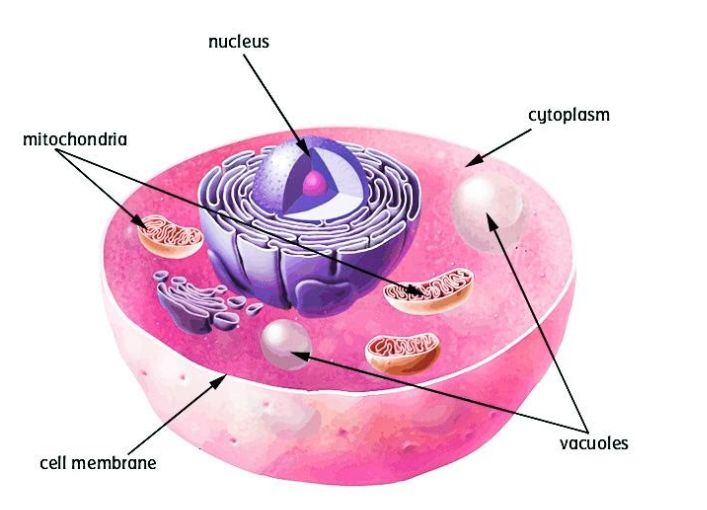
Which cell organelles are absent in an animal cell?
A) A nucleus
B) A cell wall
C) A large vacuole
D) Both B and C
Answer
495.3k+ views
Hint: A lining which gives support to the cell and water-filled large compartments are absent.
Complete step-by-step answer:
Animal cells are defined as a eukaryotic cell that lacks a cell wall but has a true membrane-bound nucleus and cell organelles. The cell wall is absent in animal cells but the cell membrane is present. The animal cells have many vacuoles but they are smaller in size.
Additional information:
- Animal cells vary according to shapes and sizes in various organisms.
- The DNA is present as a genetic material inside the nucleolus of the nucleus.
- All the cell organelles are present which perform their particular functions.
- The outer layer of the animal cell is the cell membrane or plasma membrane which is made up of lipids and proteins.
- The inner portion of the cell consists of cytoplasm which is a jelly-like substance where all the cell organelles are embedded.
- The animal cells have special organelle which is absent in plant cells. The organelle is centrosome which helps in the production of the microtubules.
- At the center, the nucleus is presently surrounded by the nuclear membrane.
- Small vacuoles are present which stores food and water, and helps in maintaining shape.
So, the correct answer is ‘Both B and C'.

Note: Karl Rudolph and J. H. F. Link observed that the cells had independent cell walls in 1804. Spallanzani was the first to observe contractile vacuoles in protozoa in 1776. The term vacuole was coined by Dujardin in 1841. The membrane of vacuole called tonoplast was named in 1885 by de Vries.
Complete step-by-step answer:
Animal cells are defined as a eukaryotic cell that lacks a cell wall but has a true membrane-bound nucleus and cell organelles. The cell wall is absent in animal cells but the cell membrane is present. The animal cells have many vacuoles but they are smaller in size.
Additional information:
- Animal cells vary according to shapes and sizes in various organisms.
- The DNA is present as a genetic material inside the nucleolus of the nucleus.
- All the cell organelles are present which perform their particular functions.
- The outer layer of the animal cell is the cell membrane or plasma membrane which is made up of lipids and proteins.
- The inner portion of the cell consists of cytoplasm which is a jelly-like substance where all the cell organelles are embedded.
- The animal cells have special organelle which is absent in plant cells. The organelle is centrosome which helps in the production of the microtubules.
- At the center, the nucleus is presently surrounded by the nuclear membrane.
- Small vacuoles are present which stores food and water, and helps in maintaining shape.
So, the correct answer is ‘Both B and C'.

Animal Cell
Note: Karl Rudolph and J. H. F. Link observed that the cells had independent cell walls in 1804. Spallanzani was the first to observe contractile vacuoles in protozoa in 1776. The term vacuole was coined by Dujardin in 1841. The membrane of vacuole called tonoplast was named in 1885 by de Vries.
Recently Updated Pages
Master Class 11 Economics: Engaging Questions & Answers for Success

Master Class 11 Business Studies: Engaging Questions & Answers for Success

Master Class 11 Accountancy: Engaging Questions & Answers for Success

The correct geometry and hybridization for XeF4 are class 11 chemistry CBSE

Water softening by Clarks process uses ACalcium bicarbonate class 11 chemistry CBSE

With reference to graphite and diamond which of the class 11 chemistry CBSE

Trending doubts
10 examples of friction in our daily life

Difference Between Prokaryotic Cells and Eukaryotic Cells

One Metric ton is equal to kg A 10000 B 1000 C 100 class 11 physics CBSE

State and prove Bernoullis theorem class 11 physics CBSE

State the laws of reflection of light

Write down 5 differences between Ntype and Ptype s class 11 physics CBSE




